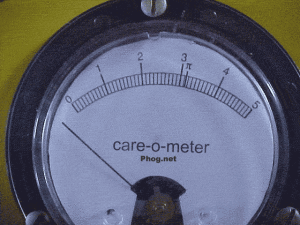Shadow Banks Explained In This Criticl Article Worth Reading Twice
It sounds cool. But what does it mean?
Though economists struggle to define shadow banks in laymen terms, or explain why the public should care, it is actually really simple; it’s just a disguised bank that dodges banking regulationsby dividing up its business model, and it’s a problem because they’re unregulated, huge, and if they fail we all fail -again. Through various loopholes, innovative business structures, and corporate partnerships, shadow banks have reinvented what it means to be a bank, and it’s paid off.
Former Federal Reserve Chairman, Ben Bernanke, described shadow banking as -basically- multiple businesses that, “…collectively, [carried] out traditional banking functions–but do so outside…” of the traditional banking system; by partitioning a single bank into multiple businesses and then working in concert with one another, the shadow banking system can bypass rules and safeguards. And by doing so they’ve grown bigger than the traditional banking sector; which is the scary part.
Traditional banks have baseline regulations that help them stay within comfortable operating capacity. There are hard minimums of actual money traditional banks are required to have, that is directly related to the amount of loans they have given. They also are required to stay within certain parameters when issuing interest rates. And deposit accounts are insured, to increase public trust and avoid a bank run, and a system-wide fractional reserve default. These might sound complicated, however these are very simple regulations, that have very real benefits; that shadow banks don’t have to comply with.
Economists often talk about all of this in very arduous terms, describing shadow banks as “banking intermediaries” that work in a “network” without “capital requirements”, “float” and “leverage restrictions.” The reality is, it’s not as complicated as economists make it seem -or at least it can be explained in a far more accessible way. Shadow banks are generally a financial institutions that has disaggregated its business model. Itemizing every function of the bank as an individual business and placing each individual business under one umbrella corporation. So instead of a single bank, shadow banks are usually mega corporations that house compartmentalized baking entities within them, that collectively do the same thing, except without rules.
With a normal bank, deposits accounts aggregate into pools (with excess becoming capital reserves) and from the pools credit is created. This is classic fractional reserve banking model. Joe deposits $10 into a bank, and the bank loans Sue $100, with interests, but the bank has to make sure it always has 10% of money on hand for all of its loans, in the off-chance that Joe withdraws his $10, the bank usually has that covered by excess reserves or “float.” This ability of banks to create large loans out of deposits that are fractional in value is at the heart of their business, it’s their “credit creation” function. This ability for banks to create credit is great for economic stimulation, but it’s also dangerous, because banks are on the hook for huge loans, with very little to back it up with, this “leverage” is a liability without a sustainable amount of capital.
Shadow banks don’t have capital requirements, they can take very little capital and leverage it to infinity. So their balance sheets show massive liabilities. How does this happen? Post-mortgage crisis regulators have become dove-ish on regulating the financial sector, for a variety of reasons. The shadow banking sector acted as a catalysts to the mortgage crash, lending out millions of sub-prime mortgages through lending houses, that weren’t deemed “banks.” Those mortgages were sold in bundles to investment banks, and hedge funds, which are also not considered “banks.”
Shadow banks have been left unregulated in the years following the crash, even though they caused it. Monetary policy and domestic policy have done their best to incentivize Wall Street and Big Banks, because the “capital markets” are seen as a driver of economic growth. As a result of dove-ish regulations shadow banks have exponentially grown, meanwhile normal banks continue to be regulated, which gives a huge advantage to the unregulated shadow banking sector. Meaning there are two parallel sectors of the economy, that functionally do the same thing, they’re playing by two different sets of rules; and of the two of them, the one that has some basic limitations on how badly it can blow up in our faces is the one at a huge disadvantage. Which is a problem for obvious reasons.
https://criticl.me/ This website tells us why we face financial disaster this year, on a variety of topics by public intellectuals who cannot find an outlet for their research and insight.
